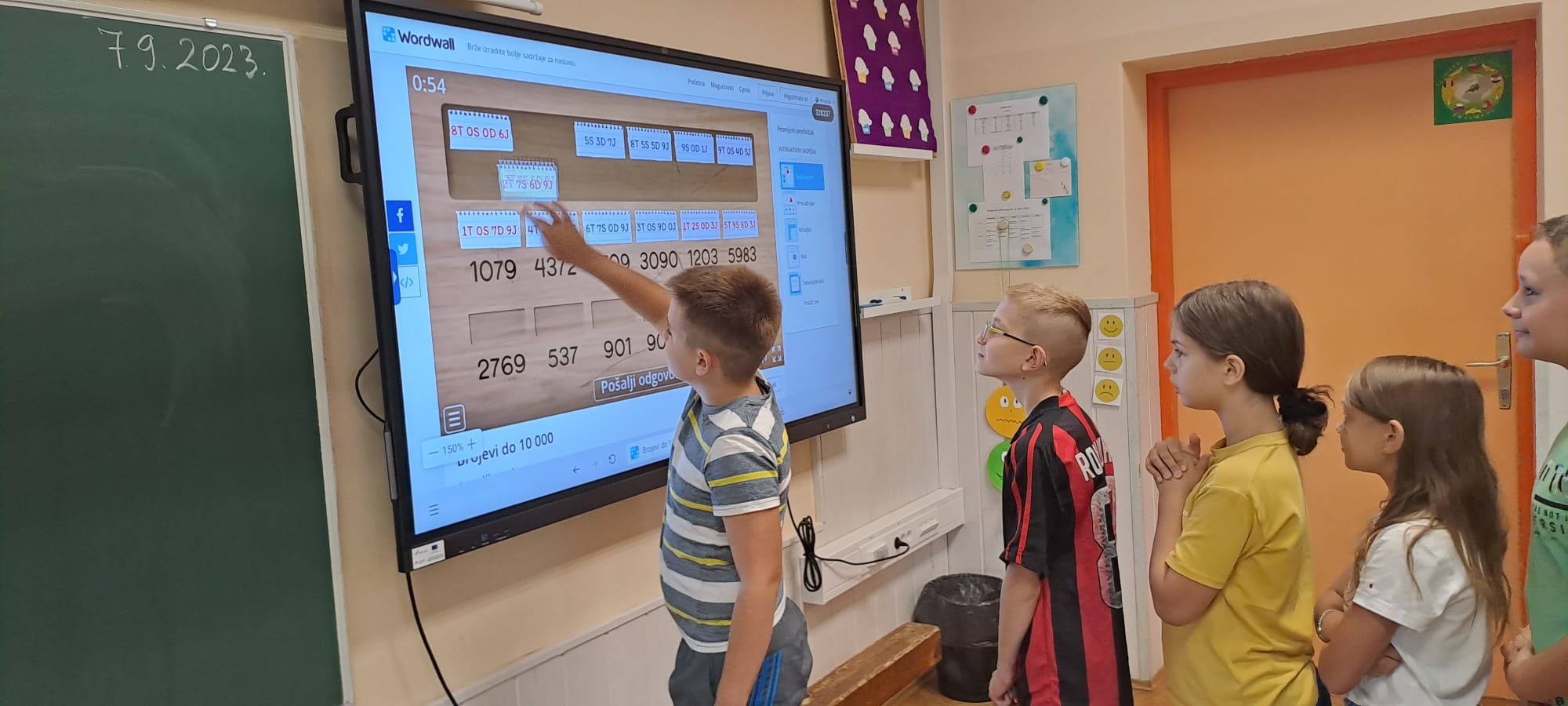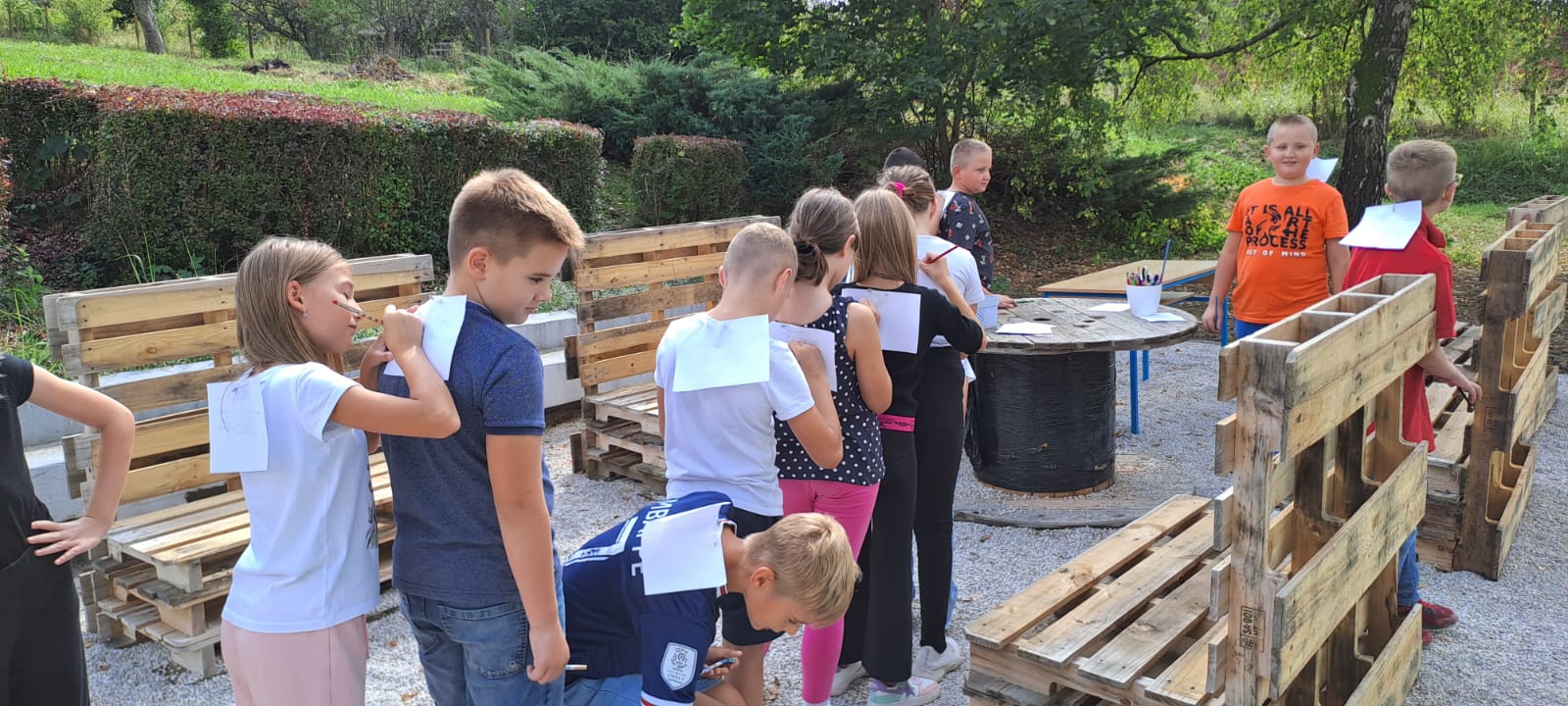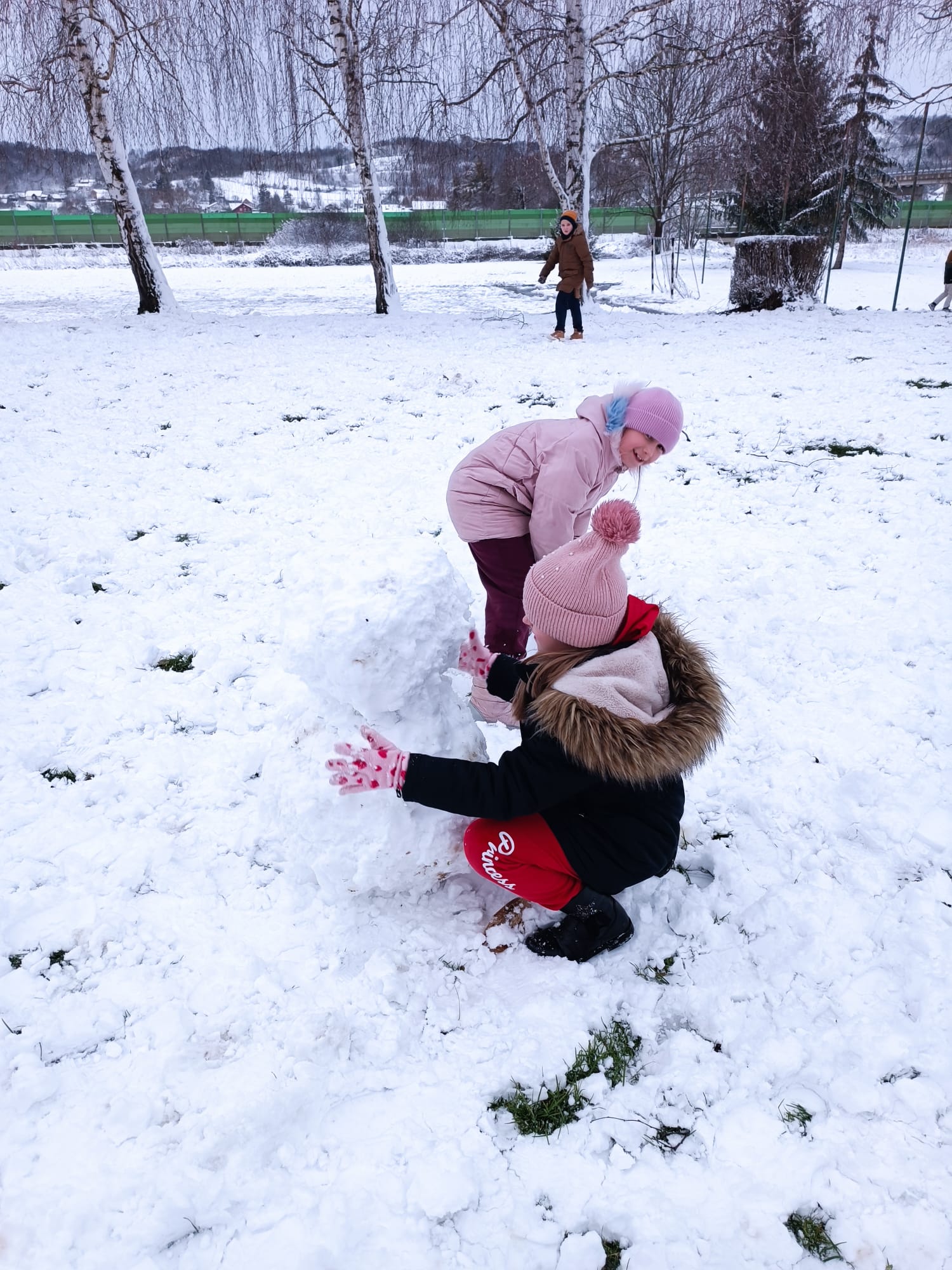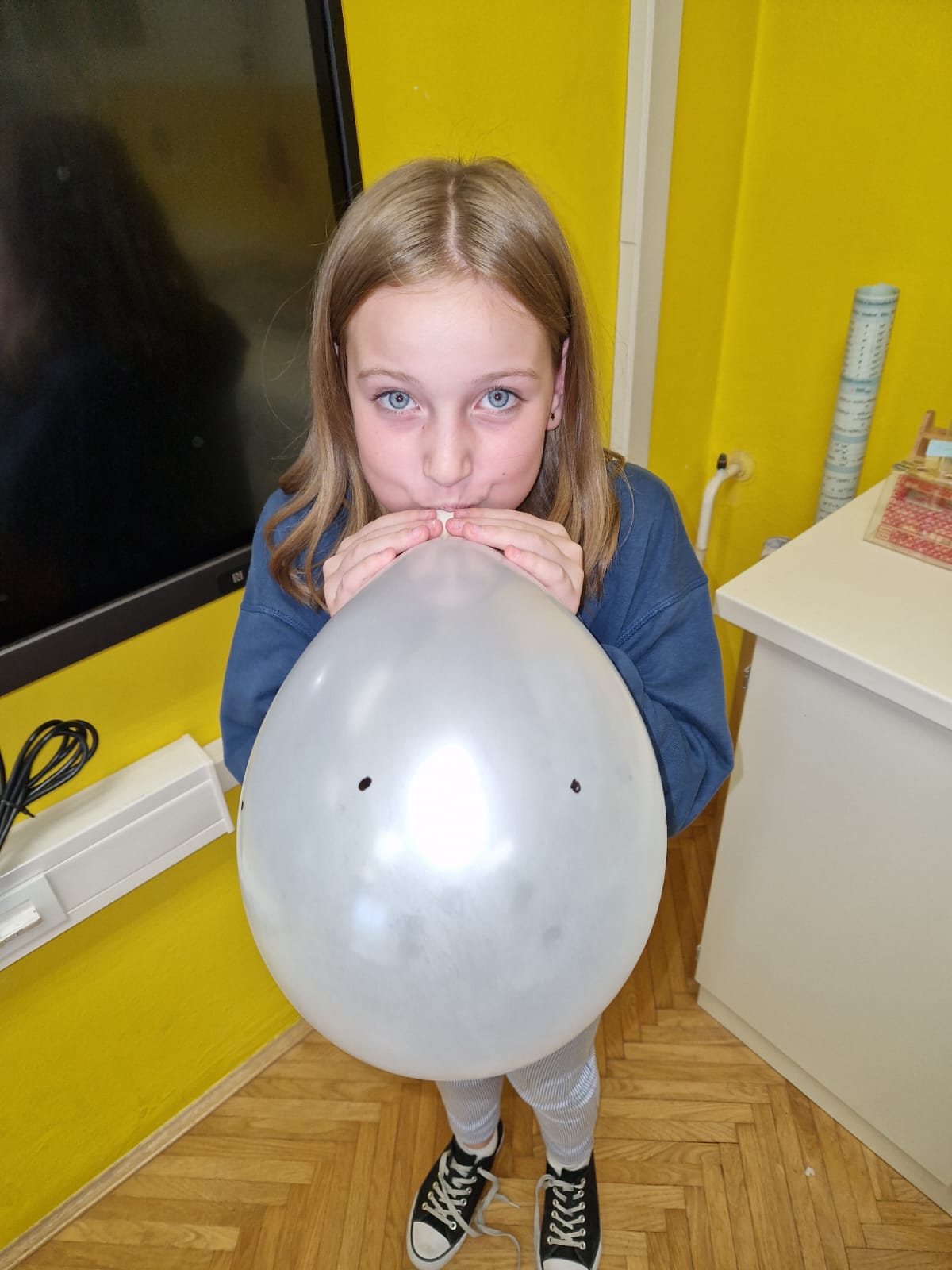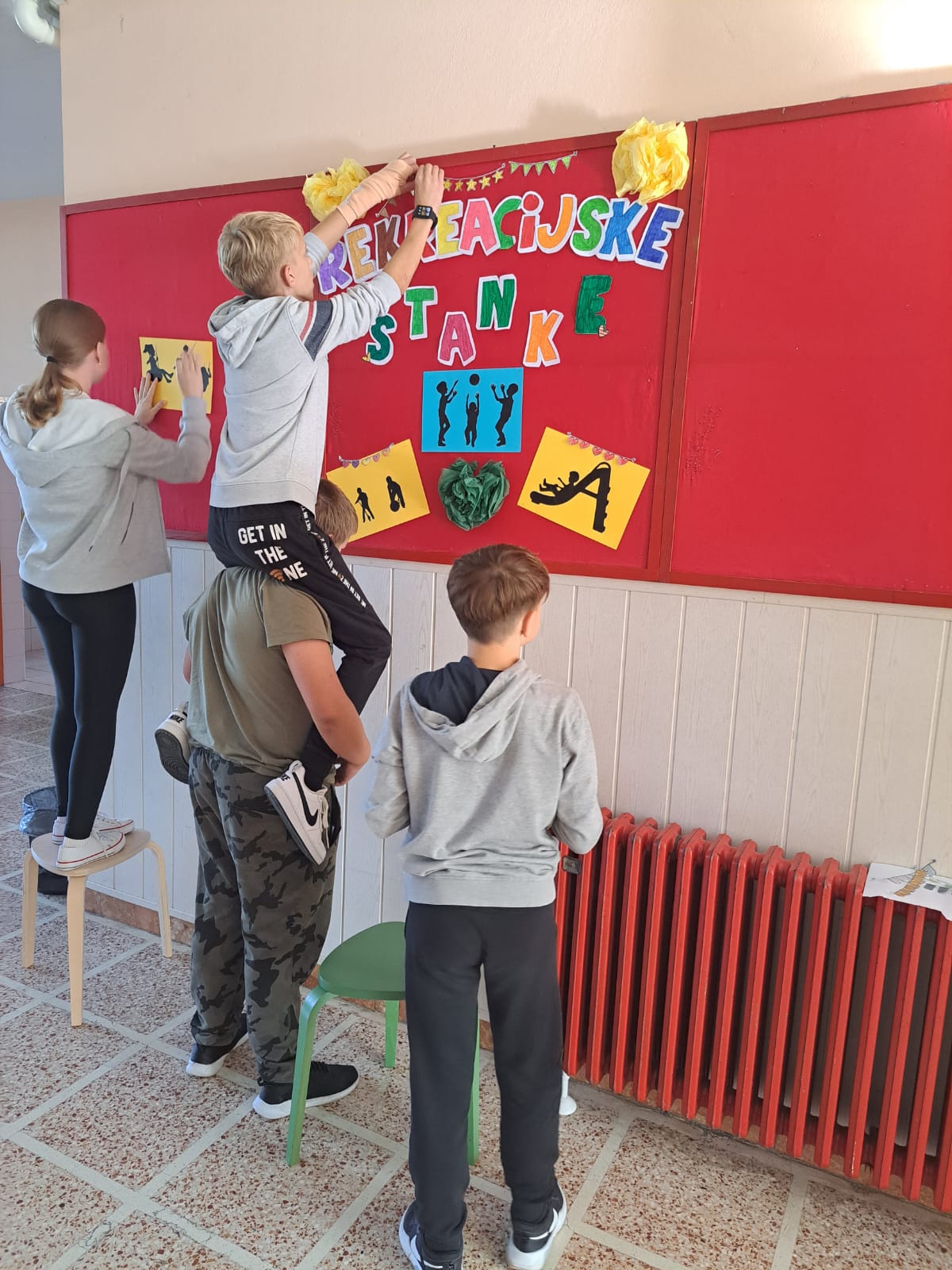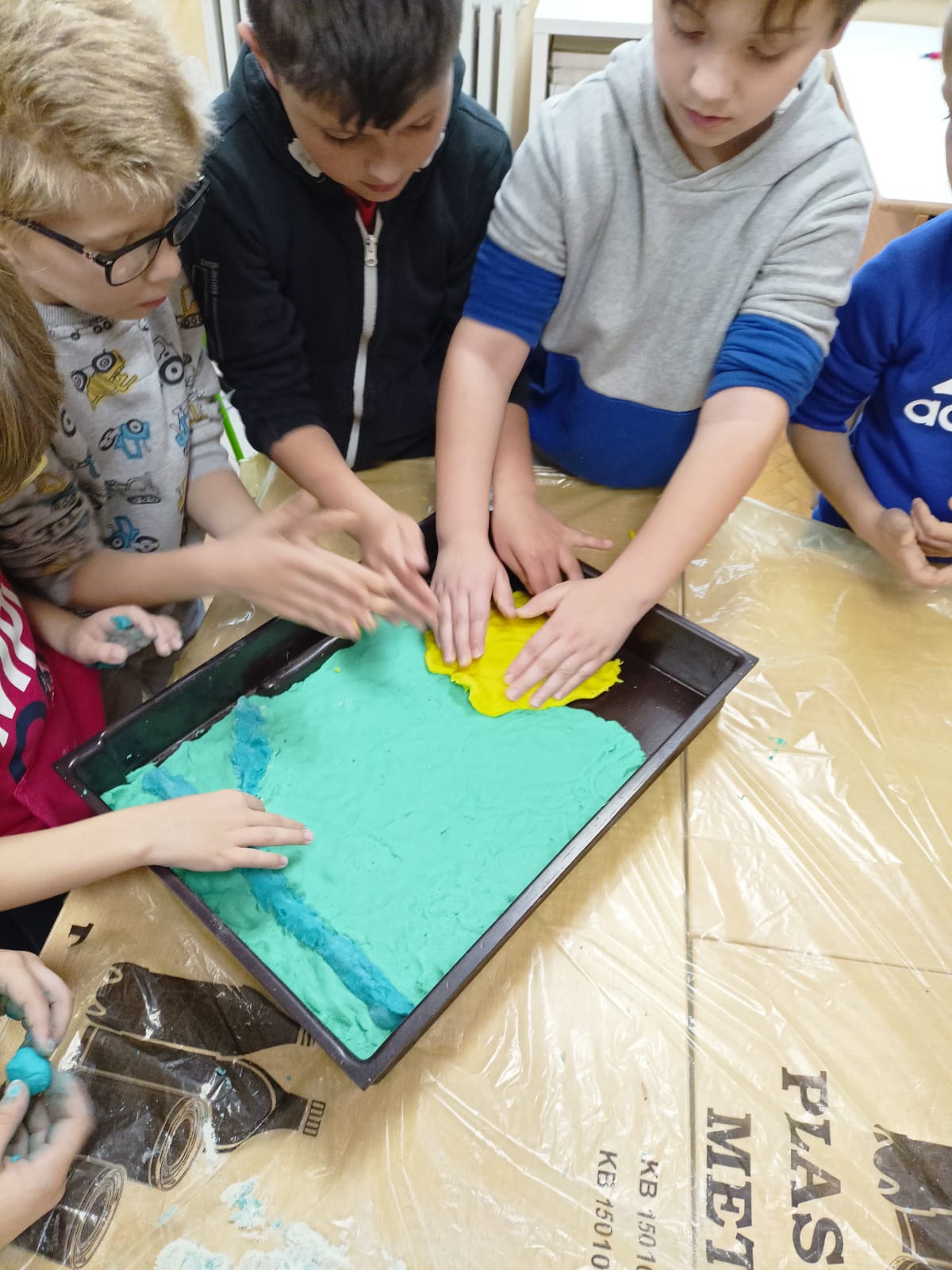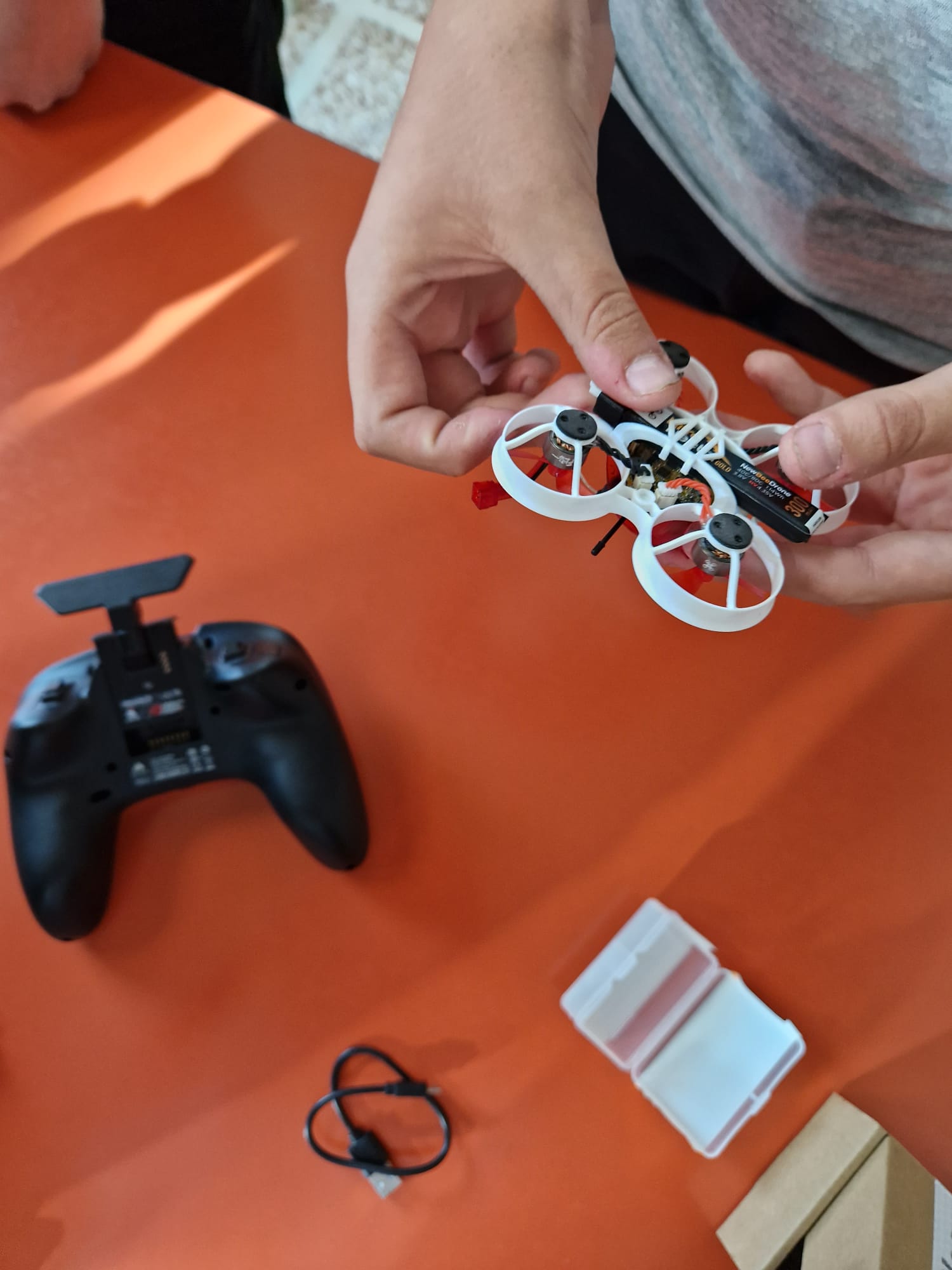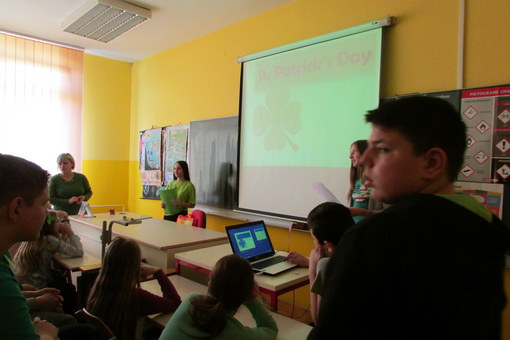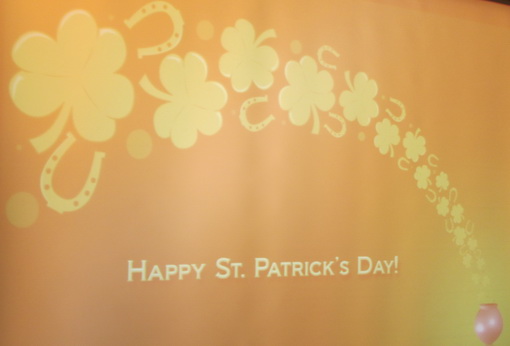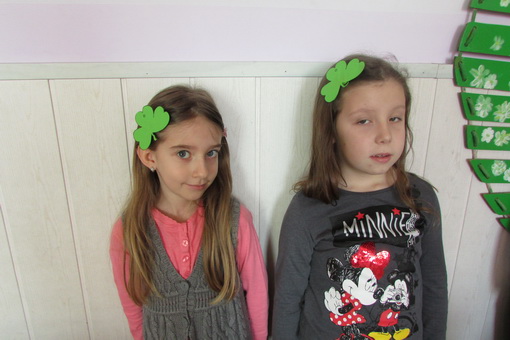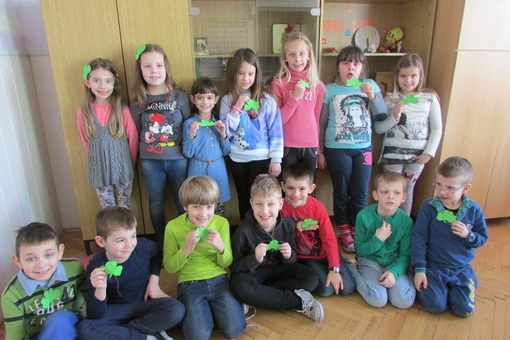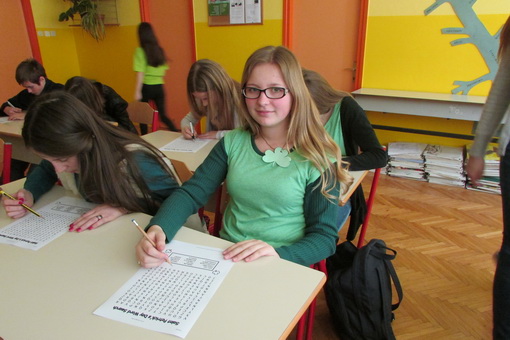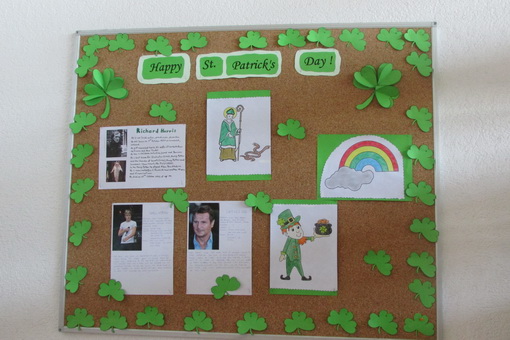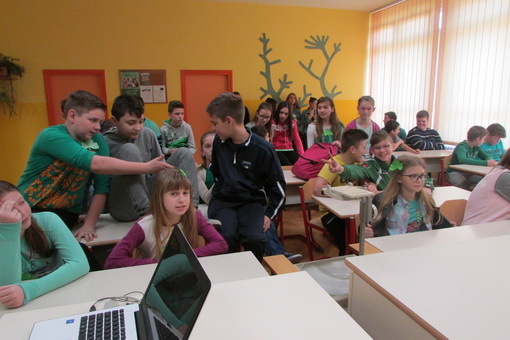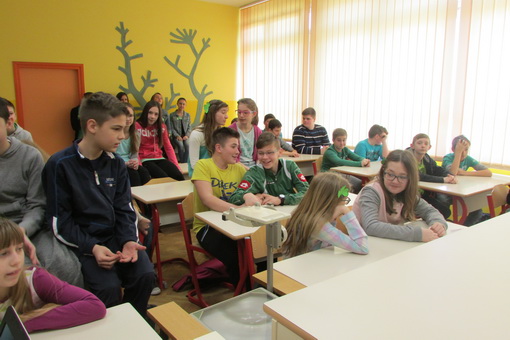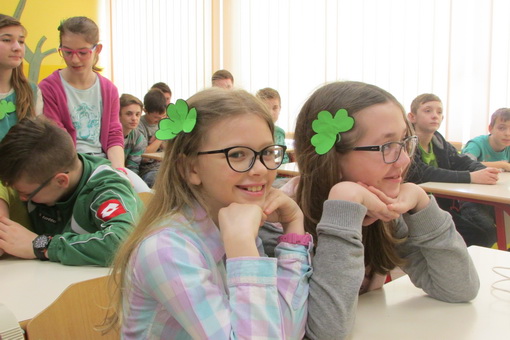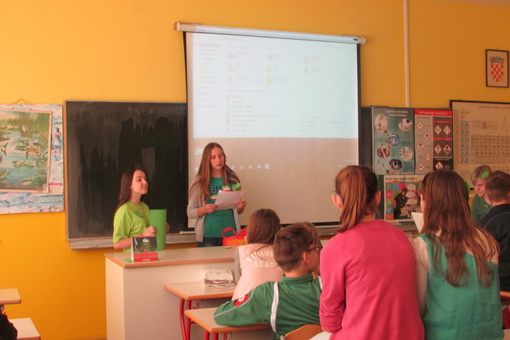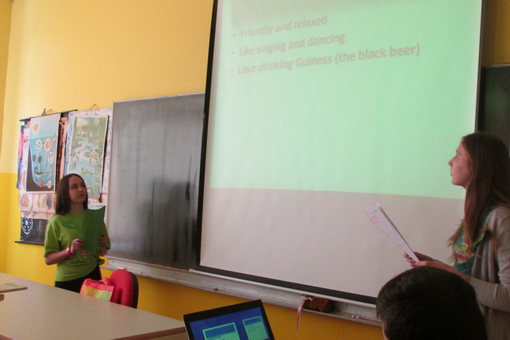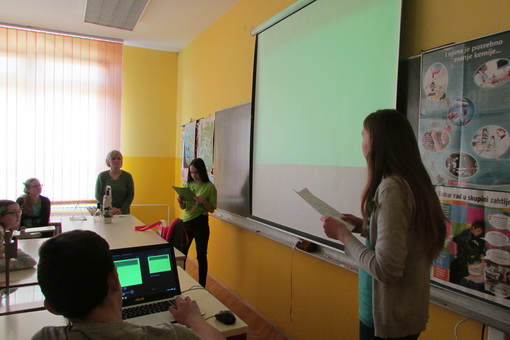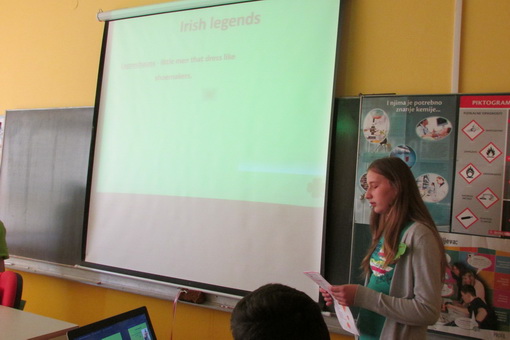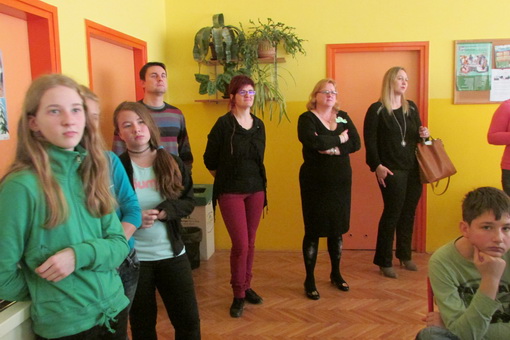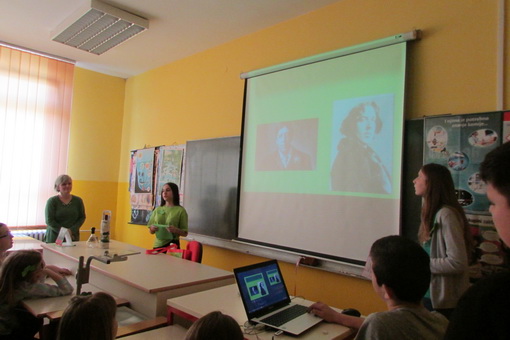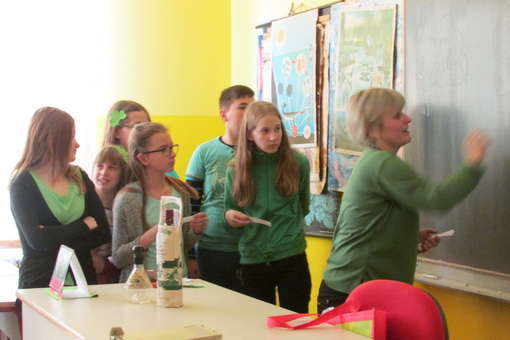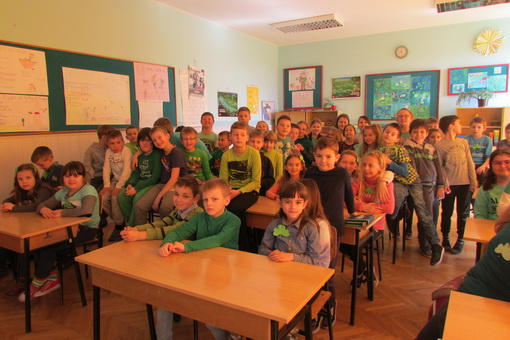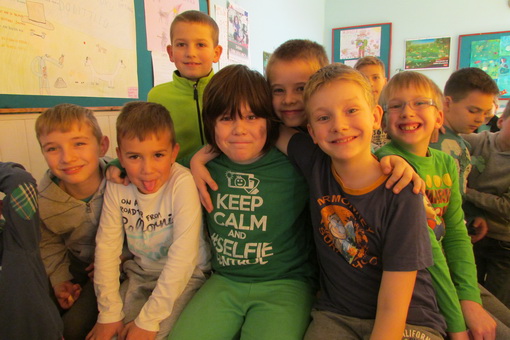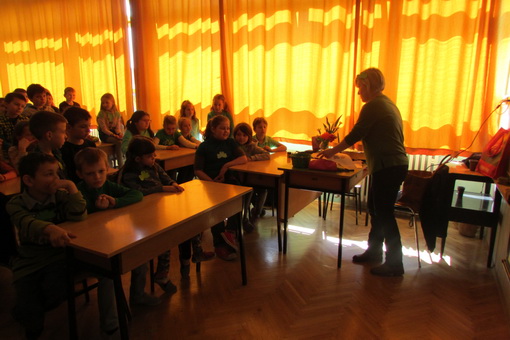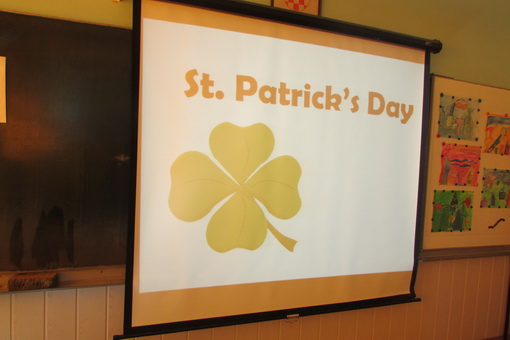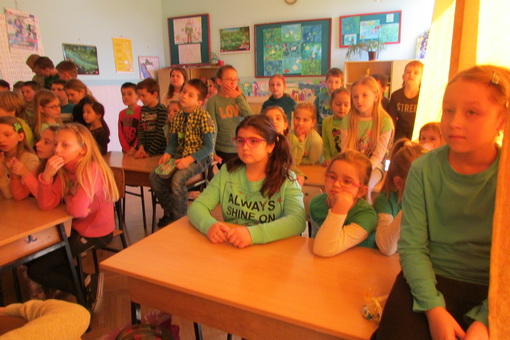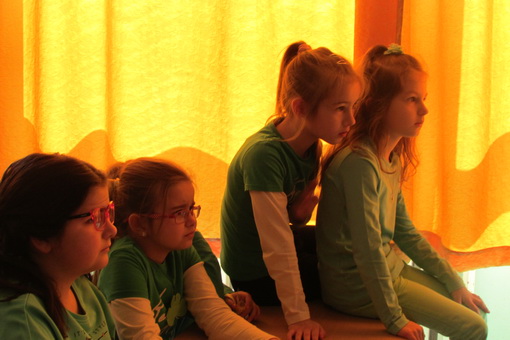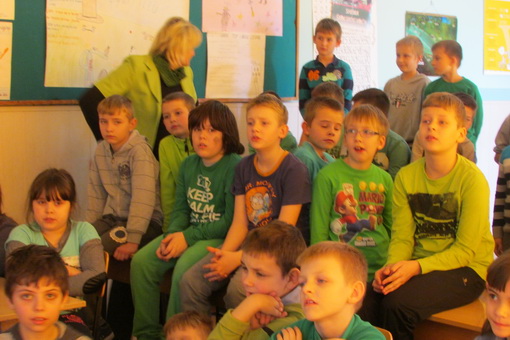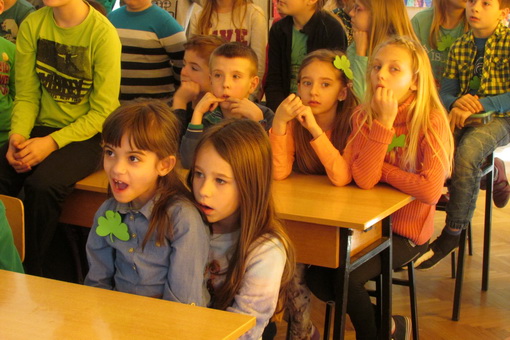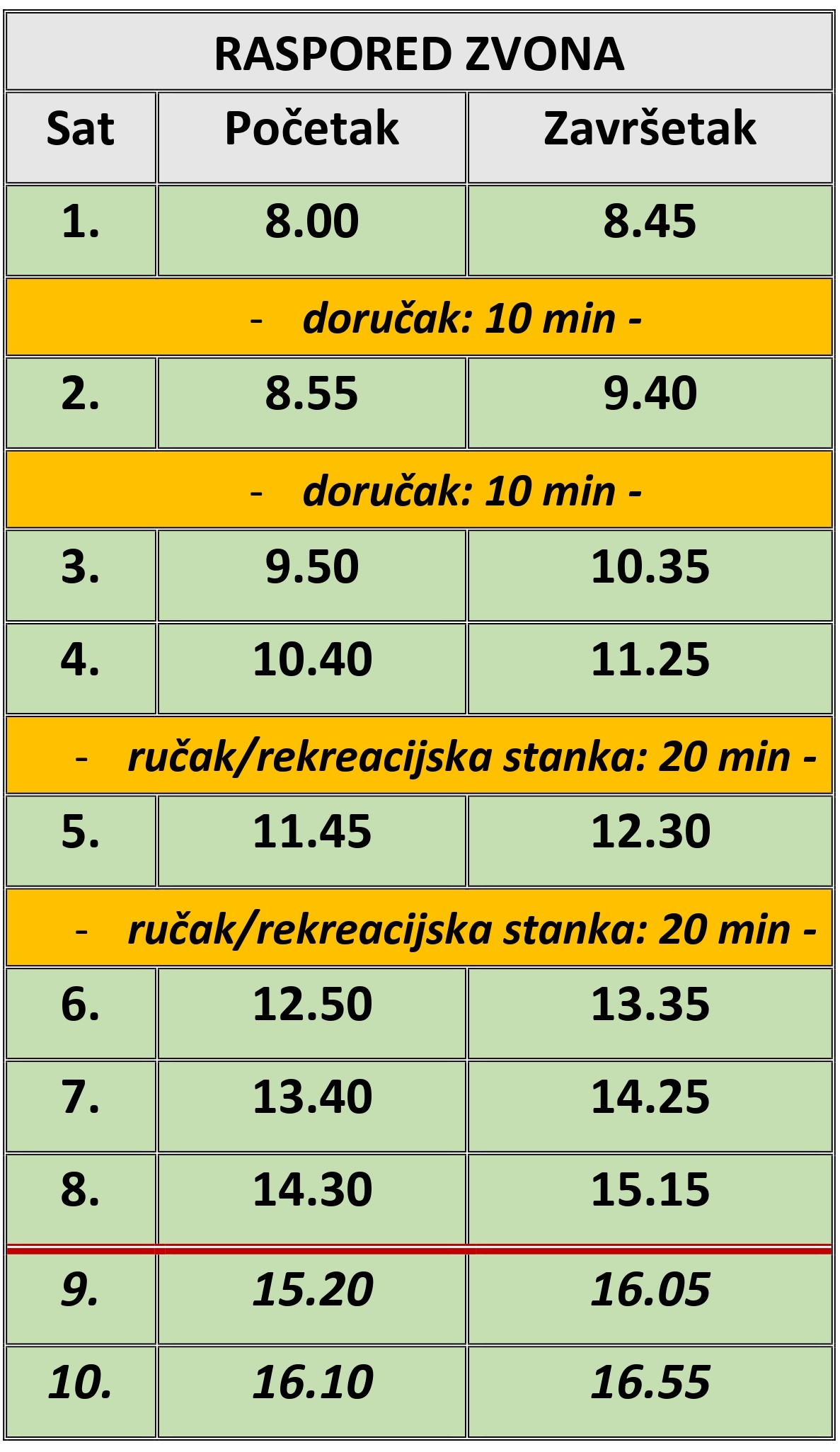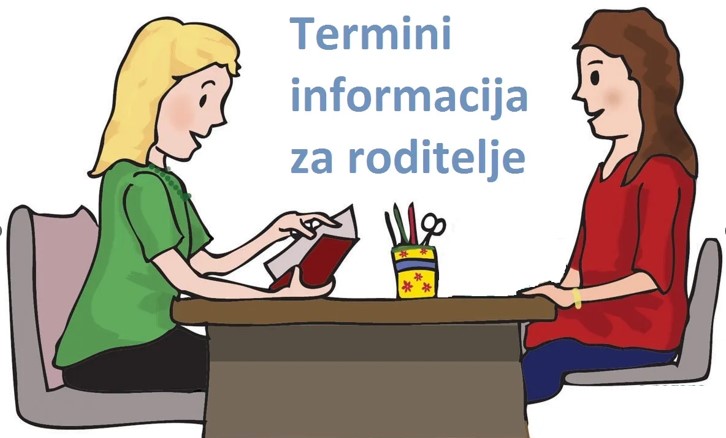| « Studeni 2024 » | ||||||
| Po | Ut | Sr | Če | Pe | Su | Ne |
| 28 | 29 | 30 | 31 | 1 | 2 | 3 |
| 4 | 5 | 6 | 7 | 8 | 9 | 10 |
| 11 | 12 | 13 | 14 | 15 | 16 | 17 |
| 18 | 19 | 20 | 21 | 22 | 23 | 24 |
| 25 | 26 | 27 | 28 | 29 | 30 | 1 |
| 2 | 3 | 4 | 5 | 6 | 7 | 8 |
Ukupno: 228065
Ovaj mjesec: 1299
Ovaj tjedan: 399
Danas: 28

OBILJEŽEN DAN SVETOG PATRIKA
U četvrtak, 17. ožujka 2016. u našoj je školi po prvi put obilježen Dan svetog Patrika, zaštitnika Irske...
Svi učenici i učitelji bili su obučeni u nešto zeleno ili su na sebi imali ukrase s listom djeteline koja je simbol Irske. Na satovima engleskog jezika su se izrađivale ogrlice, broševi i ukrasi za kosu. Sedmaši i osmaši su izradili postere o poznatim Ircima i uredili pano. Učenici 7. razreda: Mateo Vrščak, Karlo Šilinić, Dorian Brući i Marko Fišter pripremili su prezentaciju o Irskoj i Danu Sv. Patrika koja je prikazana za vrijeme prvog velikog odmora učenicima viših razreda. Prezentaciju su vodile učenice 8. razreda Patricija Švagelj i Renata Roš te učiteljica Engleskog jezika Roberta Nahod.
Irska je otok smješten u sjeverozapadnom dijelu Europe. Sastoji se od Republike Irske i Sjeverne Irske koja je dio Ujedinjenog Kraljevstva. Glavni grad Republike Irske je Dublin. Irska je članica Europske Unije, a glavna valuta je euro. Irska je nazvana "Smaragdnim otokom" zbog zelenih nizina. Irci su vrlo druželjubivi i opušteni ljudi koji vole ples i pjesmu. Vole piti crno pivo Guinness i viski. Druže se u pubovima. Također vole priče i legende.
Tko je bio Sveti Patrik?
Rođen je oko 385. godine u Velikoj Britaniji pod imenom Magonus Sucatus Paricius. Kad je imao 16 godina, oteli su ga irski gusari i odveli u Irsku. Tamo je postao rob i čuvao je ovce. Na pašnjacima je počeo puno moliti i postao je pobožan. Nakon 6 godina pobjegao je u Francusku i odlučio postati svećenik.
432 godine postao je biskup i otišao u Irsku gdje je širio Kršćanstvo te učio mnoge ljude čitati i pisati. Sveti Patrik je umro 17. ožujka oko 460. godine. Prema jednoj legendi, Sveti Patrik je otjerao sve zmije s otoka tako da ih je stavio u kutiju i bacio u Irsko more. Legenda kaže da je Irsko more uvijek valovito jer se zmije okreću u kutiji.
Druga poznata irska legenda je o vilenjacima (leprechauns). Vilenjaci su bradati čovječuljci odjeveni u zeleni kaput i hlače, a na glavi imaju veliki zeleni šešir. Rade kao postolari koji stavljaju zlatne novčiće u lonac kojega skrivaju na kraju duge. Legenda kaže da ako ga čovjek ikad ulovi, vilenjak mu mora za oslobođenje ispuniti tri želje.
Nakon prezentacije slijedio je kviz. Timovi Green Smarties i Happy Green Irish postigli su jednak broj bodova te se zasluženo zasladili slatkišima. Za vrijeme drugog velikog odmora Učiteljica Roberta Nahod je održala prezentaciju učenicima nižih razreda. Učenici su nastavili s proslavom Dana svetog Patrika na satovima engleskog jezika rješavajući križaljke, slušajući irsku glazbu te igrajući igre vezane uz ovaj dan.
Sretan Vam Dan svetog Patrika!
On March 17th we celebrated St. Patrick's Day for the first time. The pupils and our teachers were wearing something green. We were also wearing decorations with shamrock leaves because the shamrosk is one of the symbols of Ireland. During English lessons pupils were making shamrock neclaces, broches and decorations for hair. The eighth and the seventh graders made the posters about famous Irish people and they decorated the pinboard in the corridor. Mateo Vrščak, Karlo Šilinić, Marko Fišter and Dorian Brući prepared the presentation about Ireland and St. Patrick's Day which was presented during the lunch break to pupils from grade 5 to grade 8. The presenters were Renata Roš, Patricija Švagelj and our English teacher Roberta Nahod.
Ireland is an island in the north-west of Europe. It consists of the Republic of Ireland and Nothern Ireland which is the part of The United Kingdom. The capital of The Republic of Ireland is Dublin. Republic of Ireland is the member of the European Union and the currency is euro.
Ireland is called "Emerald Isle" because there are a loto f green pastures there. The Irish are very friendly and relaxed people. They like singing and dancing. They love drinking Guinness, the black beer and whiskey, too. They dance and sing in pubs. They also love stories and legends.
Who was St. Patrick?
He was born around 385 in Great Britain and died on March 17th around 460. At the age of 16 he was captured by Irish pirates and was brought to Ireland. He was a slave there and he kept sheep in the fields. He started to pray to God and decided to become a priest.
In 432 he returned to Ireland and brought Christianity to the Irish and taught many people to read and write.
The legend says that he chased all the snakes from the island. He put them in the box and threw them into the Irish Sea. According the legend, the Irish Sea is very rough because the snakes are moving and turning in the box. In fact, the snakes symbolise pagans who were turned to Christianity by St. Patrick.
Another famous Irish legend is about leprechauns, little bearded men who wear green coat, trousers and a big green hat. They are shoemakers and they are paid with gold coins which they put in a pot. The legend says that they hide the pot at the end of the rainbow. If you catch the leprechaun he can make your three wishes come true if you set him free.
On St. Patrick's Day everything is green: clothes, food, drinks, decorations, rivers and fauntains. People eat corned beef and cabbage. There are parades in the cities.
After the presentation, there was the quiz about Ireland. The teams "Green Smarties" and "Happy Green Irish" scored 6 points each and they got some sweets as a reward.
During the second lunch break teacher Roberta Nahod showed the presentation to pupils from grade 1 to grade 4 and their teachers. After the presentation , the pupils continued the celebration of St. Patrick's Day. They were listening to traditional Irish music, colouring the pictures, doing the crosswords and playing wordgames. We had a great time.
Happy St. Patrick's Day!
Patricija Švagelj and Renata Roš
